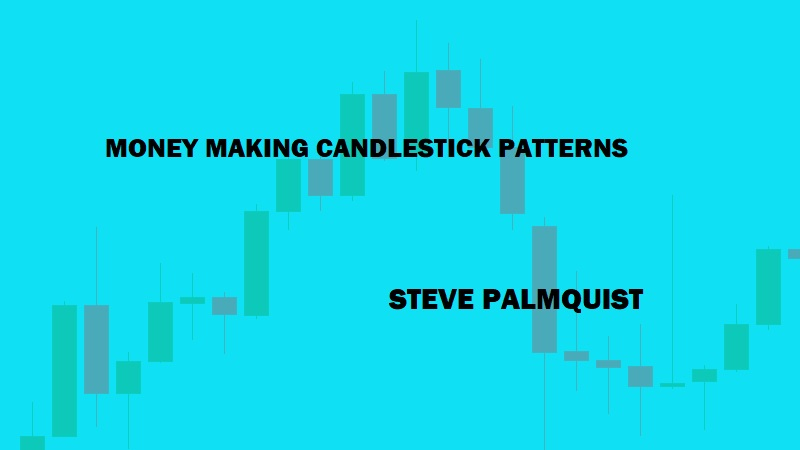Morning Star Patterns in Money Making
Define morning star, explain morning star pattern
Course: [ MONEY MAKING CANDLESTICK PATTERNS : Chapter 6: Morning Star Patterns ]

The morning star pattern is a three bar pattern that marks the end, or reversal, of a downtrend.
MORNING STAR PATTERNS
In
previous chapters, we have examined the hammer and hanging man candlestick
patterns that form in a single bar, and the bullish and bearish engulfing
patterns that form in two bars. Now it’s time to examine the next level of
candlestick patterns.
The
morning star pattern is a three bar pattern that marks the end, or reversal, of
a downtrend. The first bar is a long black body that indicates a continuation
of the downtrend. The second bar features a small body that can be either black
or white and gaps lower. The third day of the pattern shows a white body that
closes well within the area of the first day’s black body.
Figure 6.1 shows an example of a morning
star pattern that occurred in LVS on 06/28/07. The first day of the pattern is
a large black-bodied candlestick and is marked by the down arrow. The second
day of the pattern is a white body that gaps down. The third day completes the
morning star pattern by forming a white body that moves well into the area of
the first day of the pattern. This morning star pattern marks the end of the
LVS downtrend, and the stock bounces 8% in a few days.
FIGURE 6.1 MORNING STAR PATTERN IN LVS ON
06/28/07

The
second day of the pattern can be either a black or white body. The requirements
that the second day gap down and that the body of the candlestick be small are
important. Figure 6.2 shows a morning star
that formed in SYMM on 03/19/07. The stock was in a downtrend and the first day
of the three day pattern was a large black body as marked by the up arrow. On
the following day, SYMM gapped down and formed a black body. The pattern was
completed on the third day, marked by the down arrow, when the stock moved up
and formed a white body that closed well into the area of the first day of the
pattern. Following the formation of the morning star pattern, SYMM moved up
more than 6% in the next few days.
FIGURE 6.2: MORNING STAR PATTREN IN SYMM ON
03/19/07

Morning
star patterns are fairly easy to recognize, but the basic definition leaves
several parameters open to interpretation. Without a clear definition of what
constitutes a “large black body” for the first day of the pattern, or a “small body” for the second day of the pattern, or
how far into the first day’s range the final day of the pattern most close,
different traders will pick different patterns. If changes in these parameters
do not yield different results, then it does not matter. If slight changes in
the parameters affect the trading results, then traders using the morning star
should be aware of them.
STANDARD DEFINITION ASSUMPTIONS
Backtesting
provides a way for traders to better understand how variations in the
definition of the morning star pattern affect trading results. As a starting
place for this analysis, I tested the morning star pattern in the period
between 01/03/06 and 05/01/07 using the following definitions:
- The first day’s “big black bar” must have a body greater than 50% of the day’s range.
- The second day’s gap down is defined as the opening value on the second day being less than the close of the first day.
- The second day’s body must be less than half the day’s range.
- The third day’s white body must close in the upper half of the first day’s range.
The
positions were entered at the open on the day following the formation of the
morning star pattern, held for five days, then closed. Using these parameters
resulted in more than 51% winning trades and a fractional annualized ROI for
the 1,476 trades during the period, as shown in Figure
6.3.
FIGURE 6.3: INITIAL MORNING STAR TEST RESULTS
FOR 01/03/06 TO 05/01/07

Table 6.1 shows the results of investigating the
effects of variations in the relationship of the first day’s black body to the
day’s range. The first column shows the minimum percentage of the day’s range
the body must be on the first day of the morning star pattern. The second and
third columns show the test results for annualized ROI and percentage of
winning trades.
TABLE 6.1 EFFECT OF FIRST DAY BODY SIZE ON 01/
03/06 TO 05/01/07 TEST RESULTS
The
results shown in Table 6.1 are interesting
in that they show improving annualized ROI numbers as smaller and smaller body
sizes are allowed when the body size is measured as a percentage of the day’s
range. In fact, when the requirement of the first day’s black body is changed
to require it to be less than 30% of the day’s trading range, the test results
for the period improve significantly, as shown in Figure
6.4. The 23% annualized ROI beats the 14% buy and hold and the
percentage of winning trades increases to more than 54%.
FIGURE 6.4: TEST RESULTS WHEN FIRST DAY BLACK
BODY IS <30% OF THE DAY’S RANGE

An
example of the morning star pattern using this small body requirement of the
first day of the formation is shown in Figure 6.5. HEB
was in a clear downtrend when it formed a black candlestick on 07/20/06 whose
body was less than 30% of the day’s range. The next day, HEB gapped down and
formed a small-bodied candlestick. The third day completed the morning star
pattern by moving up well into the range of the first day of the pattern.
FIGURE 6.5: SMALL FIRST DAY BLACK BODY
MORNING STAR IN HEB ON 07/20/06

Another
example of the small first day morning star pattern is shown in Figure 6.6 in
which GMR is in a downtrend and forms a black-bodied candlestick with a body
less than 30% of the day’s range on 06/12/06, which is followed by a candlestick
that gaps down and forms a small body. On the third day of the pattern, GMR
moves up and closes well into the range of the first day of the pattern, which
completed the morning star.
FIGURE 6.6: SMALL FIRST DAY BLACK BODY MORNING
STAR IN GMR ON 06/14/06

The
small body morning star results outlined above are interesting. Backtesting
often leads traders in new and sometimes unexpected directions, which is
another reason for going through the process. These results are something worth
looking into further, but they also deviate from the typical morning star
pattern with which most traders are familiar. That means it’s time to
investigate other ways to improve the trading results of the more typical
pattern.
MONEY MAKING CANDLESTICK PATTERNS : Chapter 6: Morning Star Patterns : Tag: Candlestick Pattern Trading, Forex : Define morning star, explain morning star pattern - Morning Star Patterns in Money Making





